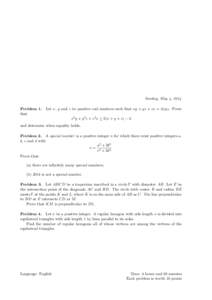<--- Back to Details
| First Page | Document Content | |
|---|---|---|
 Date: 2014-05-04 11:54:13Triangle Quadrilateral Equilateral triangle Circle Fermat point Pythagorean theorem Geometry Triangles Triangle geometry |
Add to Reading List |
| First Page | Document Content | |
|---|---|---|
 Date: 2014-05-04 11:54:13Triangle Quadrilateral Equilateral triangle Circle Fermat point Pythagorean theorem Geometry Triangles Triangle geometry |
Add to Reading List |